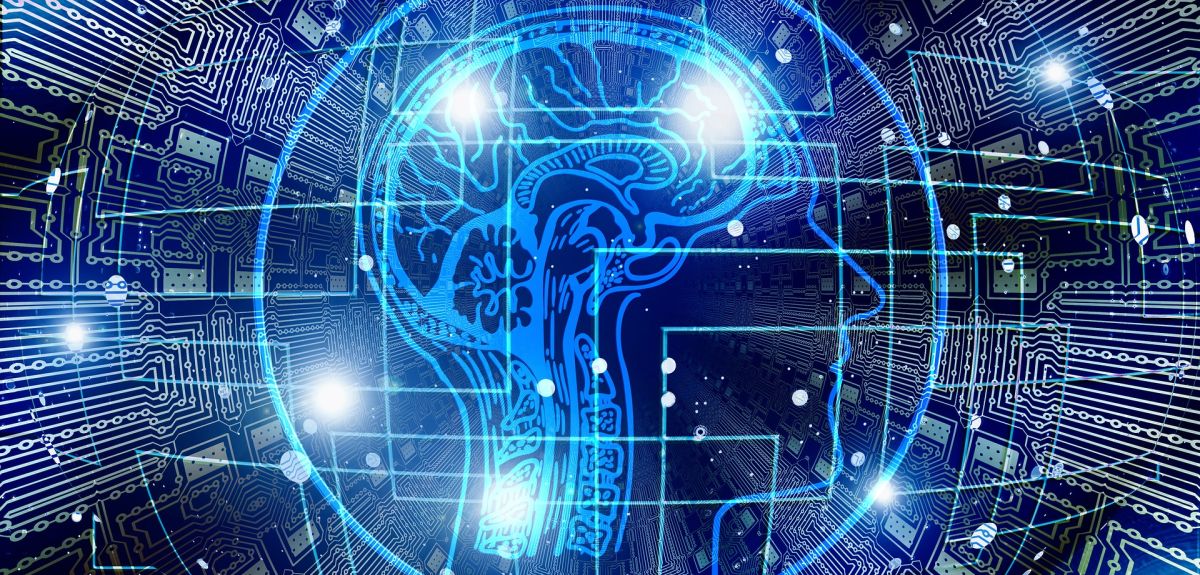
Image credit: Pixabay
Study shows that the way the brain learns is different from the way that artificial intelligence systems learn
Researchers from the MRC Brain Network Dynamics Unit and Oxford University’s Department of Computer Science have set out a new principle to explain how the brain adjusts connections between neurons during learning. This new insight may guide further research on learning in brain networks and may inspire faster and more robust learning algorithms in artificial intelligence.
The essence of learning is to pinpoint which components in the information-processing pipeline are responsible for an error in output. In artificial intelligence, this is achieved by backpropagation: adjusting a model’s parameters to reduce the error in the output. Many researchers believe that the brain employs a similar learning principle.
However, the biological brain is superior to current machine learning systems. For example, we can learn new information by just seeing it once, while artificial systems need to be trained hundreds of times with the same pieces of information to learn them. Furthermore, we can learn new information while maintaining the knowledge we already have, while learning new information in artificial neural networks often interferes with existing knowledge and degrades it rapidly.
These observations motivated the researchers to identify the fundamental principle employed by the brain during learning. They looked at some existing sets of mathematical equations describing changes in the behaviour of neurons and in the synaptic connections between them. They analysed and simulated these information-processing models and found that they employ a fundamentally different learning principle from that used by artificial neural networks.
In artificial neural networks, an external algorithm tries to modify synaptic connections in order to reduce error, whereas the researchers propose that the human brain first settles the activity of neurons into an optimal balanced configuration before adjusting synaptic connections. The researchers posit that this is in fact an efficient feature of the way that human brains learn. This is because it reduces interference by preserving existing knowledge, which in turn speeds up learning.
Writing in Nature Neuroscience, the researchers describe this new learning principle, which they have termed ‘prospective configuration’. They demonstrated in computer simulations that models employing this prospective configuration can learn faster and more effectively than artificial neural networks in tasks that are typically faced by animals and humans in nature.
The authors use the real-life example of a bear fishing for salmon. The bear can see the river and it has learnt that if it can also hear the river and smell the salmon it is likely to catch one. But one day, the bear arrives at the river with a damaged ear, so it can’t hear it. In an artificial neural network information processing model, this lack of hearing would also result in a lack of smell (because while learning there is no sound, backpropagation would change multiple connections including those between neurons encoding the river and the salmon) and the bear would conclude that there is no salmon, and go hungry. But in the animal brain, the lack of sound does not interfere with the knowledge that there is still the smell of the salmon, therefore the salmon is still likely to be there for catching.
The researchers developed a mathematical theory showing that letting neurons settle into a prospective configuration reduces interference between information during learning. They demonstrated that prospective configuration explains neural activity and behaviour in multiple learning experiments better than artificial neural networks.
Lead researcher Professor Rafal Bogacz of MRC Brain Network Dynamics Unit and Oxford’s Nuffield Department of Clinical Neurosciences says: ‘There is currently a big gap between abstract models performing prospective configuration, and our detailed knowledge of anatomy of brain networks. Future research by our group aims to bridge the gap between abstract models and real brains, and understand how the algorithm of prospective configuration is implemented in anatomically identified cortical networks.’
The first author of the study Dr Yuhang Song adds: ‘In the case of machine learning, the simulation of prospective configuration on existing computers is slow, because they operate in fundamentally different ways from the biological brain. A new type of computer or dedicated brain-inspired hardware needs to be developed, that will be able to implement prospective configuration rapidly and with little energy use.’
The paper, ‘Inferring Neural Activity Before Plasticity: A Foundation for Learning Beyond Backpropagation’, is published in Nature Neuroscience.
 Landmark study definitively shows that conservation actions are effective at halting and reversing biodiversity loss
Landmark study definitively shows that conservation actions are effective at halting and reversing biodiversity loss
 Researchers find oldest undisputed evidence of Earth’s magnetic field
Researchers find oldest undisputed evidence of Earth’s magnetic field
 Honorary degree recipients for 2024 announced
Honorary degree recipients for 2024 announced
 Vice-Chancellor's innovative cross-curricular programme celebrated
Vice-Chancellor's innovative cross-curricular programme celebrated
 New database sheds light on violence in Greek detention facilities
New database sheds light on violence in Greek detention facilities